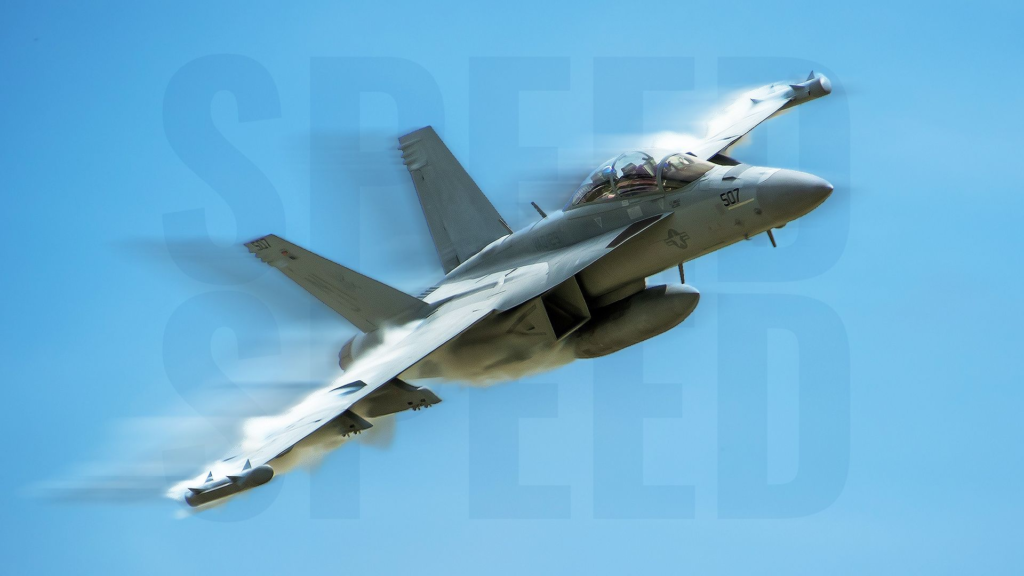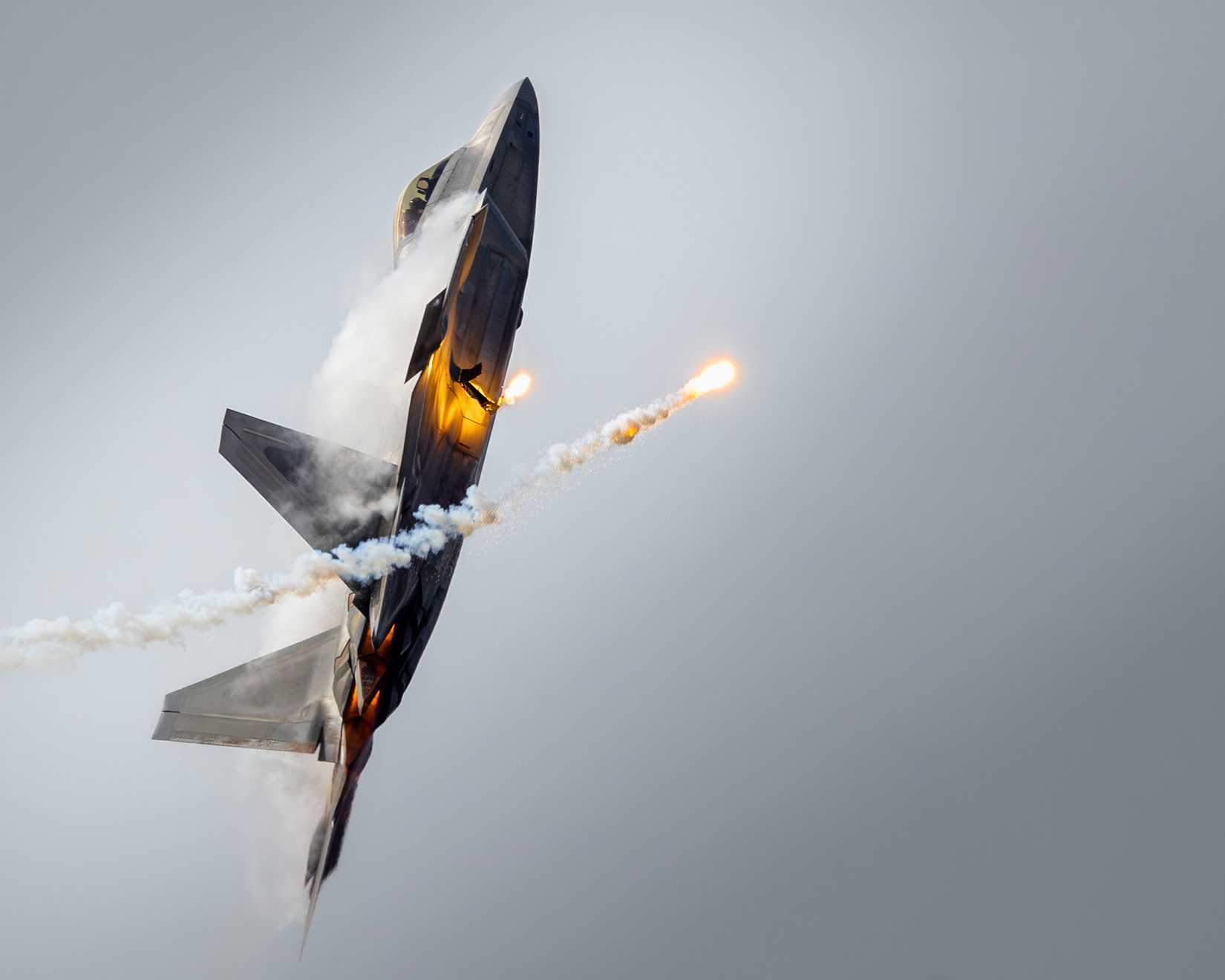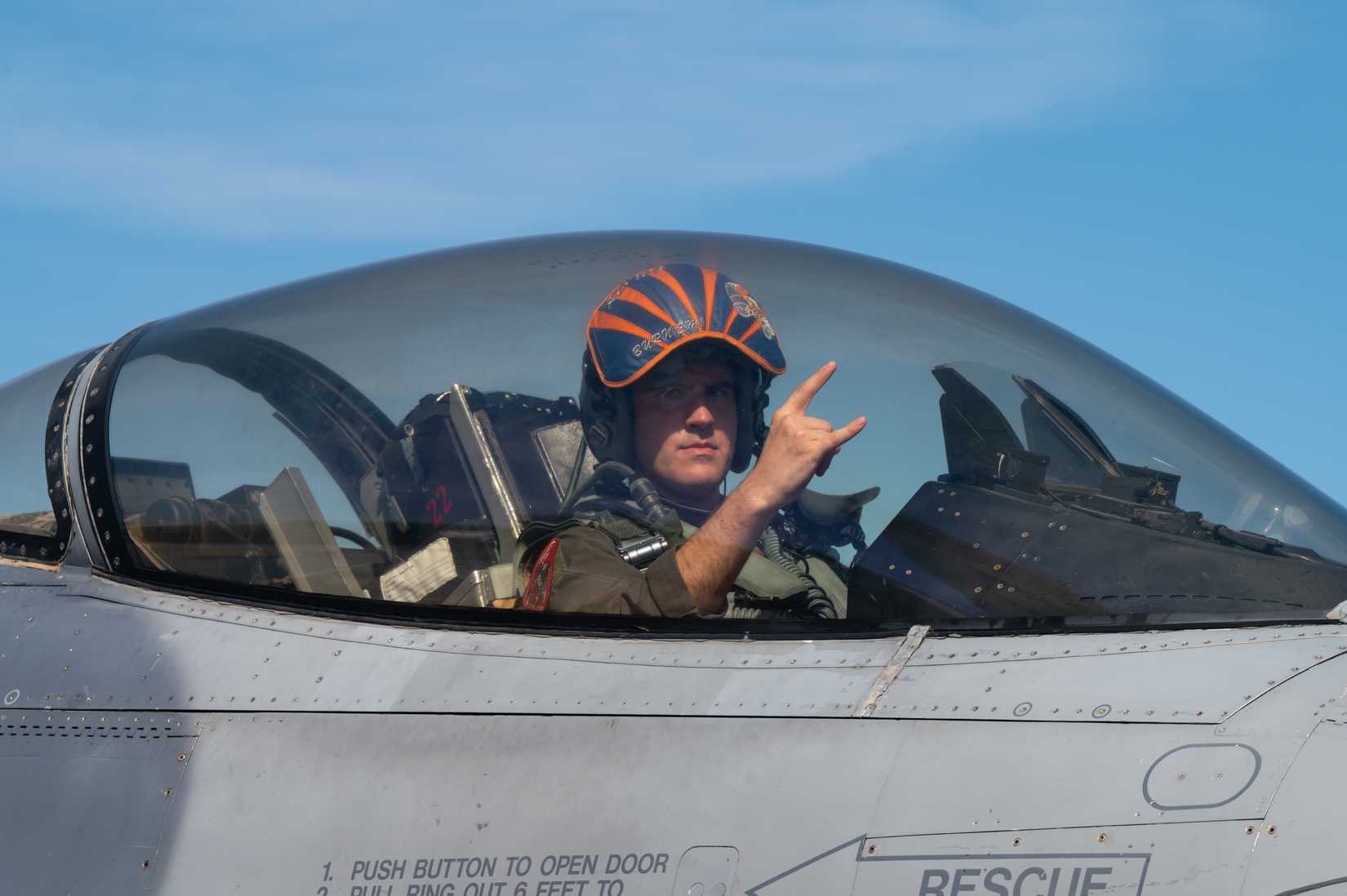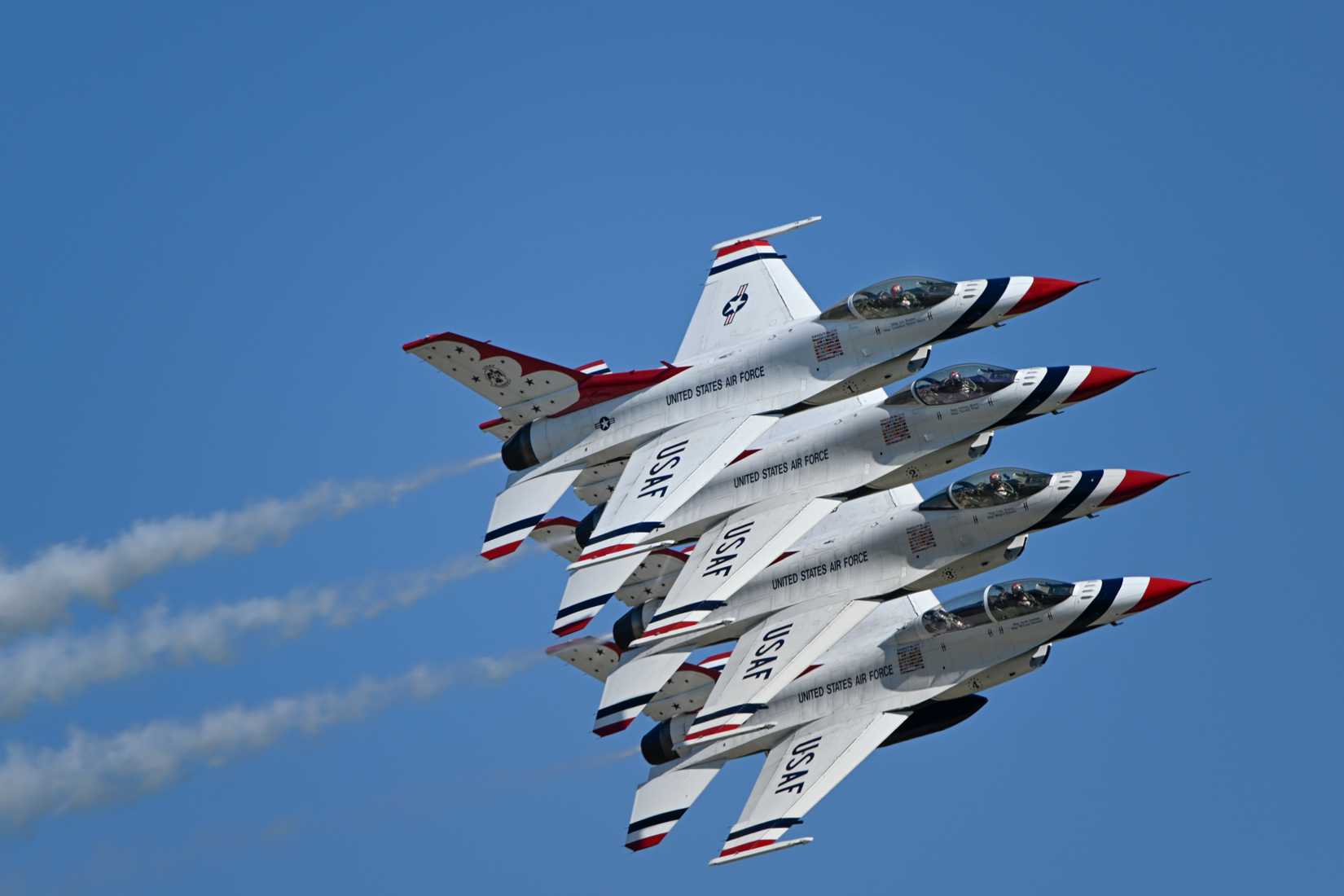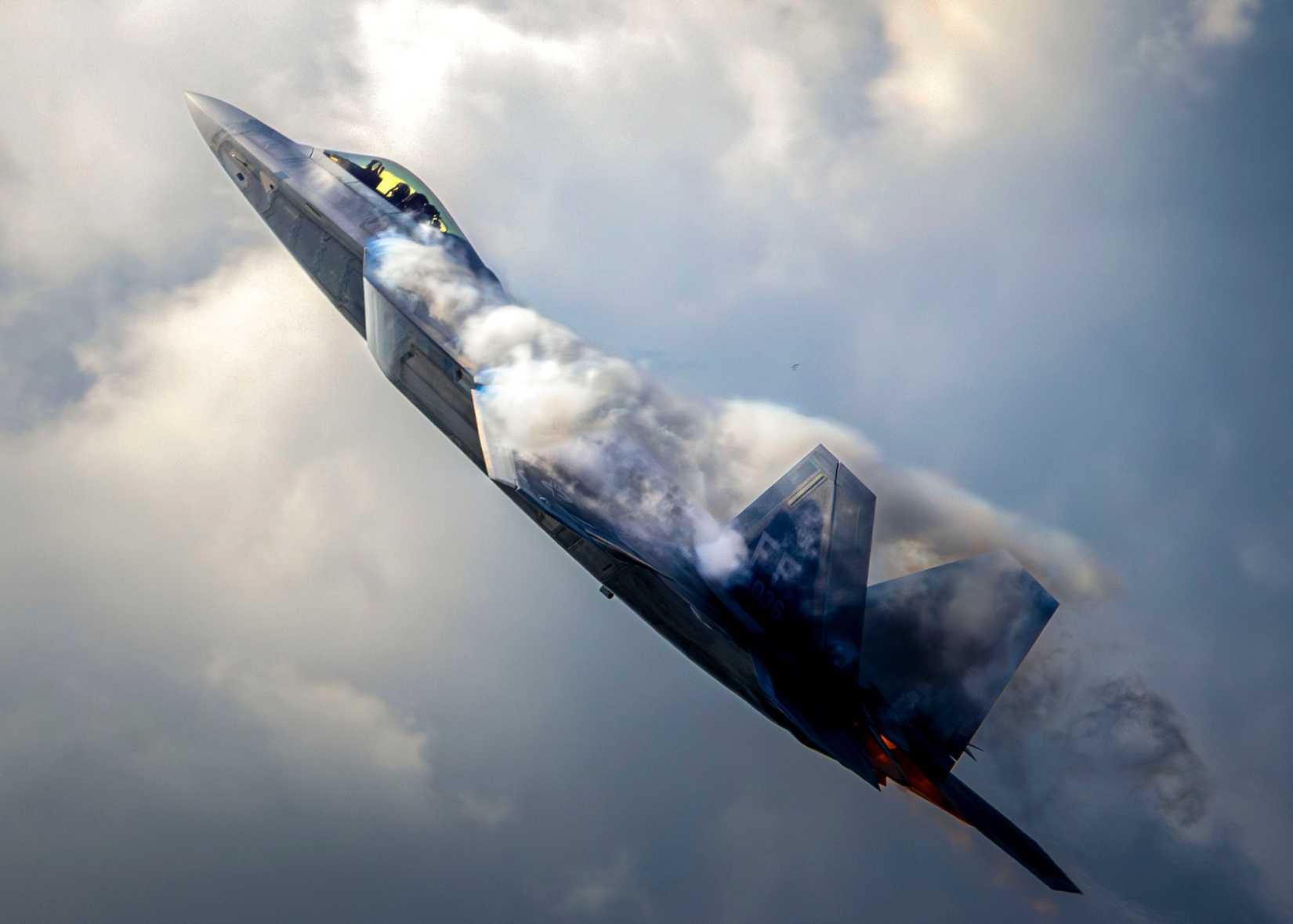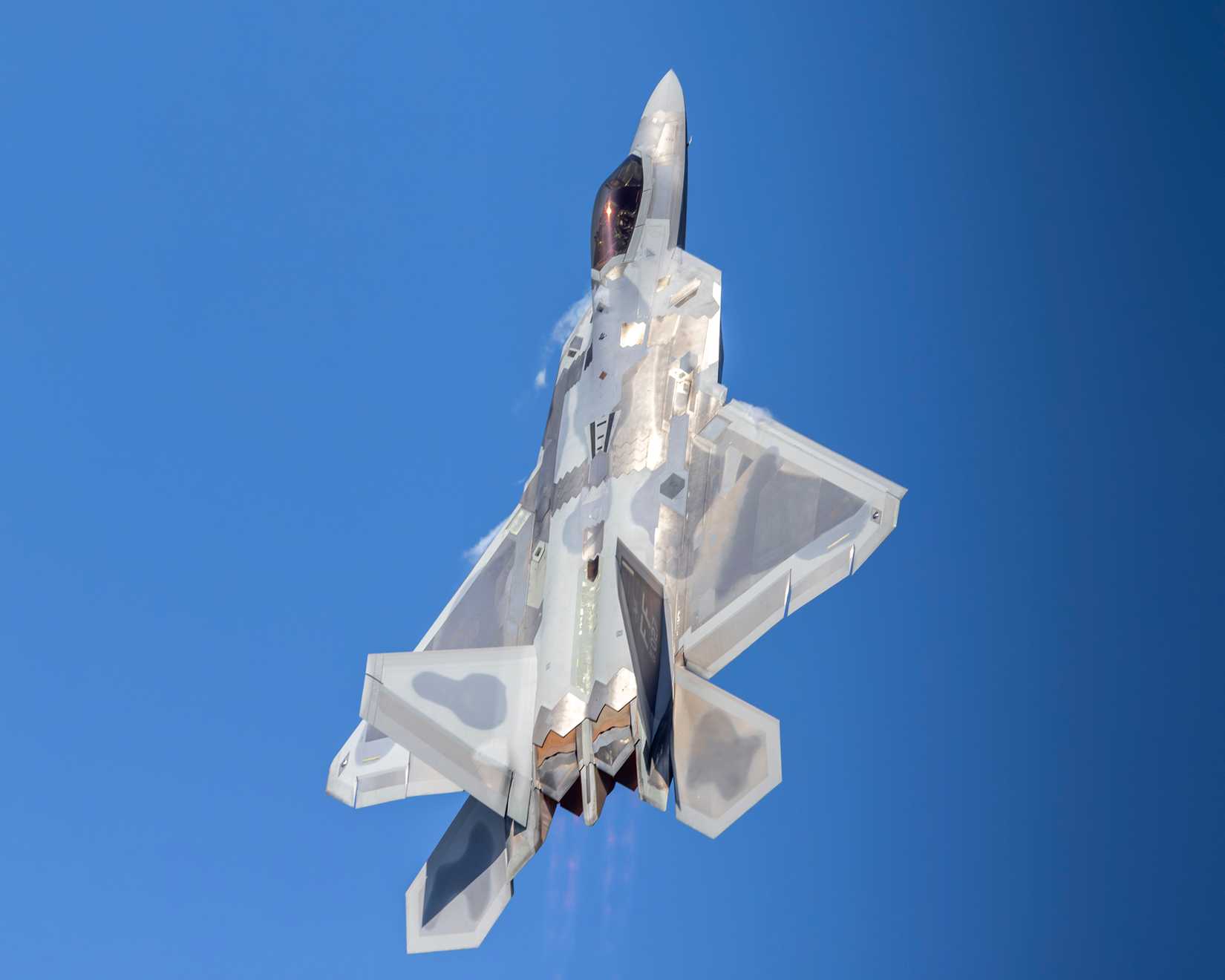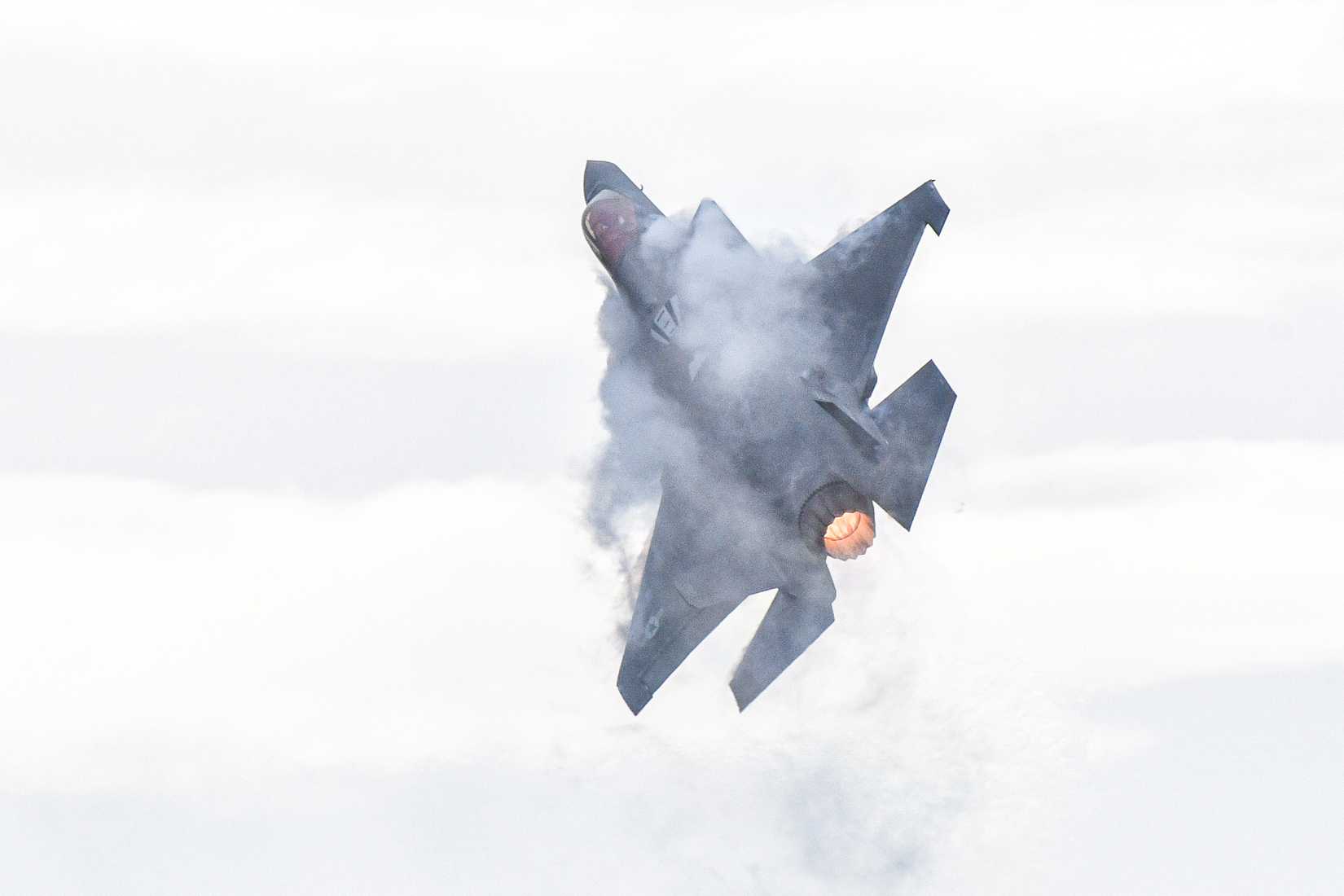In 2025, the battle for dominance of the skies focuses largely on the raw speed and firepower of combat aircraft, as it has since the debut of airplanes on the battlefield. Today, stealth has become a more decisive factor than many conventional measurements of performance, including speed and maneuverability. However, the heavy losses incurred by American aviators in the skies over Vietnam forever cemented the value of designing fighters for agile dogfighting.
So the question is, why can’t a high-power jet with immense thrust and a large wingspan simply turn at its highest speeds? The answer is two-fold: physics and tactics. When an F-22 Raptor is burning at supersonic speed on afterburner and the pilot throws the jet into a steep turn, either the wings are going to rip off or, if that doesn’t happen, the jet will make a very wide turn to say the least.
Airframes are limited to the number of G-forces they can withstand, as are the aircrew that fly them. Former Air Force fighter pilot, Hasard Lee, gave a clear and concise explanation on YouTube as to how most fighter jets are limited to a range between 7.5 and 9 G’s. The way that modern fighter jets make their turns as sharp as possible at the highest speeds they can is through a combination of advanced technology and training techniques.
Air Combat Maneuvering
Air Combat Maneuvering (ACM), or dogfighting, is a balance of speed, altitude, and turn radius to gain the advantage over an enemy fighter. Going all the way back to the first airplanes, soaring over “No Man’s Land” in World War I, the fight in the air was often decided by the agility of the planes on opposing sides. Advancements in weaponry, speed, altitude, and targeting sensors have changed many aspects of aerial combat, but this fundamental aspect is still a central element of tactics.
The American airmen who fought in Vietnam suffered heavy losses against North Vietnamese MiG-21s and other fighters because of a choice made by politicians, engineers, and the top brass to move away from dogfighting tactics. The pilots of McDonnell Douglas F-4 Phantoms in the USAF, Navy, and Marines were taught to use their superior performance and missiles to fight without guns and avoid meeting the enemy in a close encounter. After the war was over, the “Fighter Mafia” of the USAF pushed back and demanded the next lightweight fighter to be designed to win any turning fight, yielding the F-16 Fighting Falcon.
The F-16 has since gone on to be one of the most mass-produced and successful fighter jets in history, with over 4,500 made and nearly 30 operating air forces around the world. Even so, the Viper, as the F-16 is also called, does its maneuvering at subsonic speeds and often near stall speed when dogfights get particularly tough. The simple reason goes back to physical limits on man and machine. When a jet is turning hard at high speed, the forces are immense. Pushing too far can cause a pilot to black out, it can cause structural damage to the plane, or cause an aerodynamically unstable situation that leads to a crash or gives the enemy a chance to gain the advantage.
The Hic Maneuver
The “hic maneuver” is an Anti-G Straining Maneuver (AGSM) used by fighter pilots to prevent loss of consciousness (G-LOC) during high-G turns. The hic maneuver can be described as: a quick, forceful inhale, followed by briefly holding the breath, and finally an equally quick and forceful exhale. The technique is used to overcome the effects of gravity in high-G maneuvers that drain blood from the brain. The action is characterized by the distinctive “hic” sound that it derives its name from.
The hic maneuver was invented in the early 1940s during World War II by the famed Mayo Clinic. The research conducted by this team to improve fighter pilot performance would also yield the “G-suit” that is worn by pilots to improve their resilience against the G-forces. Also debuted in the 1940s, the G-suit features air bladders that pressurize around the lower body to force blood back into a pilot’s brain.
The combination of correctly executing the hic maneuver and wearing a G-suit can significantly improve a pilot’s ability to perform under the pressure of high G-forces. They still put the upper limit at 9-Gs, meanwhile most jets can withstand 12 Gs and a missile can turn under 40-50 Gs. The average person can typically only endure a few Gs without the specialized training received by fighter pilots.
Balancing On The Razor’s Edge
In order to outmaneuver their opponent in a duel, fighter pilots manage the potential and kinetic energy of their aircraft. This is accomplished by aggressive flying to keep the opponent off-balance and force errors, as well as clever maneuvering like trading altitude for speed during a dive.
Potential energy is the energy of height in dogfighting, while kinetic energy is the energy of motion (airspeed). By diving to exchange altitude for speed (kinetic energy) or climbing to exchange speed for altitude (potential energy), pilots are continuously converting these two types of energy. The combined “energy state” determines how well an aircraft can move, and a pilot who effectively controls their energy can obtain a significant advantage.
Kinetic energy, which is obtained by diving or using the engine’s power, is the energy from an aircraft’s speed that is required for movements. A pilot can execute high-energy spins to prevent an opponent from taking a shot or maintain a high velocity to accelerate out of hazardous circumstances during combat.
Potential energy is the force of gravity multiplied by the altitude of an airplane. By diving or climbing, pilots can transform potential energy into kinetic energy, which slows them down but increases their altitude. Low altitude pilots must use their speed to climb before reversing the situation, whereas high altitude pilots have greater potential energy to convert into a dive for speed.
By using their energy wisely, a pilot can maintain a performance advantage, setting up a better firing solution and forcing the opponent to react to their moves. Pilots leverage the fact that during a descent, potential energy can change into kinetic energy and vice versa. They employ tactics like “Yo-Yos” to obtain a short-term edge and “energy fighting” to preserve and capitalize on an energy advantage.
In a dogfight, it is important to stay above the enemy because a pilot can climb up to regain energy, then dive back down on the opponent from above, making them lose energy to follow. Since specific aircraft perform better at particular altitudes, pilots also need to grasp the capabilities of the battlefield at various altitudes.
Thrust Vectoring
A select few of the most advanced fighters in the world feature a unique form of turn-enhancing technology where the nozzle of the jet engine moves in concert with the control surfaces to redirect the thrust. That is known as “thrust vectoring,” and the angled engine exhaust is more efficient for turning than a fixed nozzle, which goes directly out in a straight thrust vector.
This does increase the speed at which the jet can perform tight turns, but the main purpose is to increase the maneuverability to turn in a smaller radius and gain a weapons lock. The F-22’s thrust vectoring system augments control surfaces like elevators, rudders, and ailerons. The aircraft’s nozzles can shift up and down by as much as 20 degrees. The flight control computer controls the nozzles in accordance with the pilot’s stick motions, completely automating the system.
The large, heavy, and fast F-22 can execute high-alpha (near stall) and post-stall maneuvers that traditional aircraft cannot because of this system. Increased agility makes it easier for the aircraft to outmaneuver opponents and even avoid missiles. Ultimately, the F-22 is still limited by G-forces just like every other fighter, but what it can do before hitting that limit far exceeds virtually every other jet on Earth.
The Sensor Fused Battlefield
Stealth technology and advanced weapons have made engagements in the air vastly more complex. The ever-growing range and lethality of weapons, combined with equally advanced passive and active countermeasures, has made tech more influential than ever before in the war in the air. All the same, the best systems and highest performance figures don’t mean that a dogfight is entirely avoidable, as the painful and bloody lessons of Vietnam showed the US military’s leaders in the 1960s and 1970s.
Some new missiles in development, like the AIM-260 and hypersonic weapons, are being designed for supersonic engagements at extremely long, beyond visual range (BVR) distances; not many weapons in current armories can be used at such speeds. The most common US missile for those engagements is the AIM-120 advanced medium-range air-to-air missile (AMRAAM), but it is not effective at close range.
The majority of fighter jet launches will occur at subsonic speed since they carry a limited payload each time they take off and a mix of long-range and short-range armaments. Both the F-22, F-16, and the F-35 have built-in cannons and can carry the AIM-120 and AIM-9 Sidewinder, enabling close-quarters and long-range air combat.
Overcoming the limits of physics with technology and skill is the nature of the struggle for air dominance. As the future brings increasingly more capable unmanned aircraft, the tactics will change and evolve. The absence of human physiological limitations will revolutionize the maneuvers employed by air forces across the globe.


